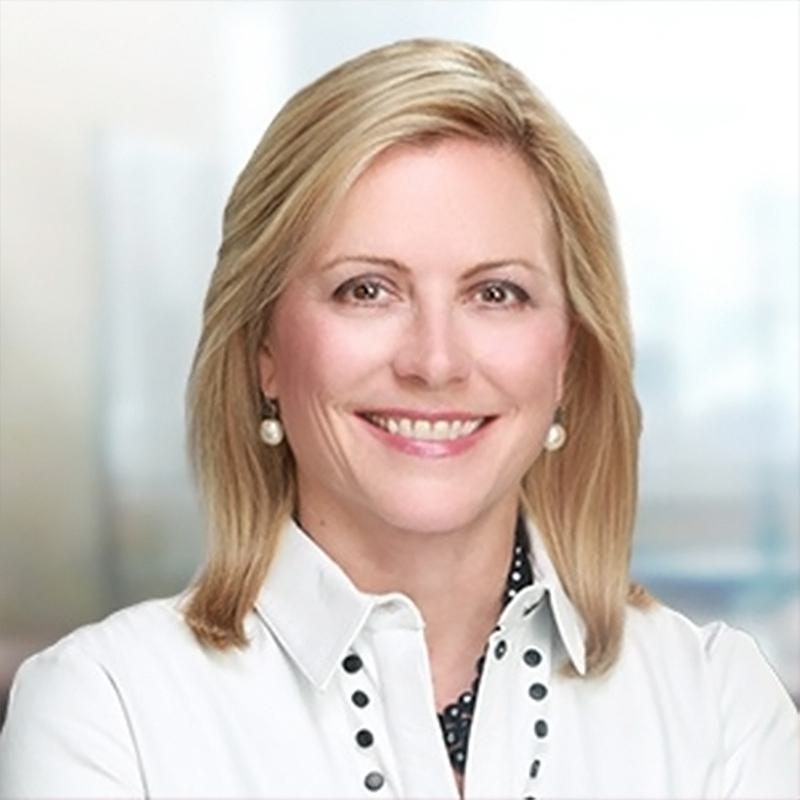Fast Facts
Location:
Chicago, IL
Number of employees:
5,500
Time in current role:
7 years
Passion project:
Founding member of Women’s Leadership and Mentoring Alliance (WLMA)
Questions & Answers
What was your first job?:
My first job was detasseling corn in Madison, WI, where I grew up. I had a very Midwestern upbringing with a lot of focus on work ethic. My parents believed it was important to have a job while you were in school so you could learn to figure out a balance between the two, which is a big part of why I chose to detassel corn. The job only existed for around a 3-week-long span in the summer, and you could work 14- to 15-hour days, make a lot of money that could be put away for later, and still have time to spend with your friends for the remainder of the summer.
Who was your role model growing up?:
My grandmother had a really big impact on my life. You get your values from your parents and grandparents, and it certainly defines who you become as a person. My grandmother was educated and worked full-time as a teacher, which was really unusual for her generation. She always urged me to maintain my independence and make my own money so I’d always have the ability to have my own career and support myself. She had a very strong voice and used it to say very profound things.
How can someone find a good mentor?:
A lot of businesses have very formal mentorship programs, but I don’t think that necessarily works, because not all leaders make great mentors. The mentor-mentee relationship develops naturally, and it doesn’t necessarily have to involve two people from the same company. Some of the best mentors I’ve had didn’t work for my company or even in the same industry. When your mentor is an outsider, you can present them with issues that you need help with, and they can offer you an objective opinion.
What motivates you?:
I’m a “doer,” and very goal-oriented. I bore easily, and always have, so I need to be setting and pursuing goals and accomplishing things. We all have days where the issues we’re dealing with are really difficult and we many not want to face them, but that sense of accomplishment—of really progressing—is what motivates me the most.
Did you always aspire to be a CEO?:
Most of my family works in the education and medical fields, and I received a lot of encouragement to follow in their footsteps. But I’ve always had an independent streak and wanted to forge my own path. I was interested in business and knew that I wanted to go to business school after completing my undergraduate degree. But beyond that, I didn’t have anything planned. I didn’t have aspirations of being a CEO until I was much older and much further along in my career.
How would you describe your leadership style?:
Cool, calm, and collected is how I am often described. I think most people would say I’m very measured and fair-minded. I like to consider all options and opportunities, but I’m also very decisive. I want to resolve ambiguity and being decisive is key to being able to move forward. Whether as an individual or a company, one needs to be able to make a decision—whether it turns out to be good or bad—learn from it, and modify accordingly.
What are you doing to ensure your continued growth as a leader?:
The phrase “It’s lonely at the top” is often said about CEOs, and it’s true because you no longer have any peers within the company with whom you can talk and bounce around ideas. Because of this, I’ve had a coach in the past. I think every leader should have one at some point during their career. A great coach can help you talk through situations and alternative approaches, help you think about how you’re communicating, and serve as an unbiased sounding board. I also solicit feedback from the people I work with and ask what they’d like to see me do differently. Lastly, I am a part of several different peer CEO groups where you can connect with other CEOs, ask for advice, and create a kind of mentor/mentee relationship.
What is the biggest communications challenge leaders face today?:
The sheer amount of information coming from all directions that people must ingest on a daily basis makes it essential to figure out what information gets across. I do that by focusing on the relevancy of the message and then by looking at how often you’re trying to communicate that message and which channels work for people to truly embrace that message.
How are you working to overcome that challenge at Navigant?:
We do all sorts of things, from listening to our clients and employees to having what I call “listening posts”—people out in the market who bring us information that may be relevant, but that we didn’t already know. We are certainly always testing and trying new methods and technologies, and we also do “innovation challenges” inside of Navigant to try to bring new ideas and technologies to the forefront. As a CEO, you need to be very connected both internally and externally to make sure you’re getting a lot of different information and advice.
What advice would you offer to aspiring leaders or recent graduates?:
You don’t need to leave a company to have great job opportunities. To have a really robust and well-rounded career, try to wear as many hats as you can. The more you move around internally, the more perspective you gain on a company. That’s what helped me become a CEO. I’ve held a lot of different positions at Navigant, which gave me the opportunity to understand what possibilities and challenges particular parts of the company faced.
